03: PLANETARUM
OUR PLANETS⌗
Gazing beyond our moon, one may notice we share our energy source with seven other planetary neighbors! Contemplating our solar system siblings may remind us of creating a planet diorama, or perhaps we reminisce on the great Pluto debate.
Most of us, though, do not have an accurate mental image of these planets, especially because we cannot see them well with our eyes or basic telescopes. At best, we observe tinted specks of light; however, each planet in our solar system has a complex atmosphere correlating to a distinct color. Closer (and larger) planets like Mars and Jupiter are easier to capture in color, but farther, dimmer planets like Uranus and Neptune are a bit tricker. Keep reading as I explain how I captured each of these beauties!

Caption: These fuzzy balls may remind you of a planetary mobile – and you wouldn’t be far off. From left to right, Mars, Jupiter, Uranus, and Neptune share the stage in true color. The special compositions of gases and minerals make each planet reflect a unique color, which I aimed to capture in these (albiet blurry) pictures!
–
To create these images, I gathered the raw exposures from a Mars observation made by myself, a Jupiter observation made by Tiger Nekervis, and Neptune and Uranus observations made by our instructor, Daniel Reichart. For each planet’s image set, I used Afterglow to adjust the planet’s position in the images to be consistent across all images, which helps align, and ultimately, stack images to create our red, green, and blue colored layers.
Because Mars and Jupiter are quite bright, to capture them, we want to use lower-throughput filters than red, green, and blue. Tiger and I took 10 exposures each using U, Halpha, and OIII filters, which I assigned to colors before stacking (I assigned U to blue, Halpha to red, and OIII to green). I then performed a final manual adjustment pass, adjusting the colors by eye. Although their resolutions are far from those of professional images, my main goal was to find a color balance that matched the pros’! Below are a side-by-sides of professional images and my own:
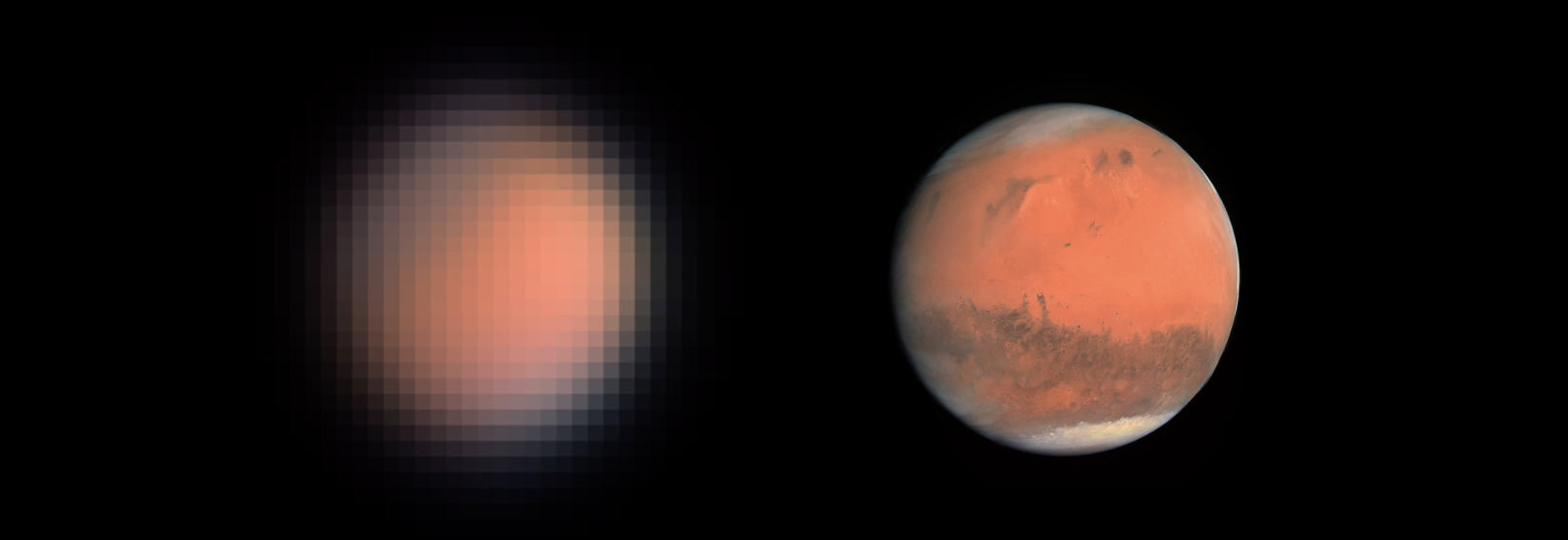 My Mars image on the left with a Mars image from OSIRIS on the right.
My Mars image on the left with a Mars image from OSIRIS on the right.
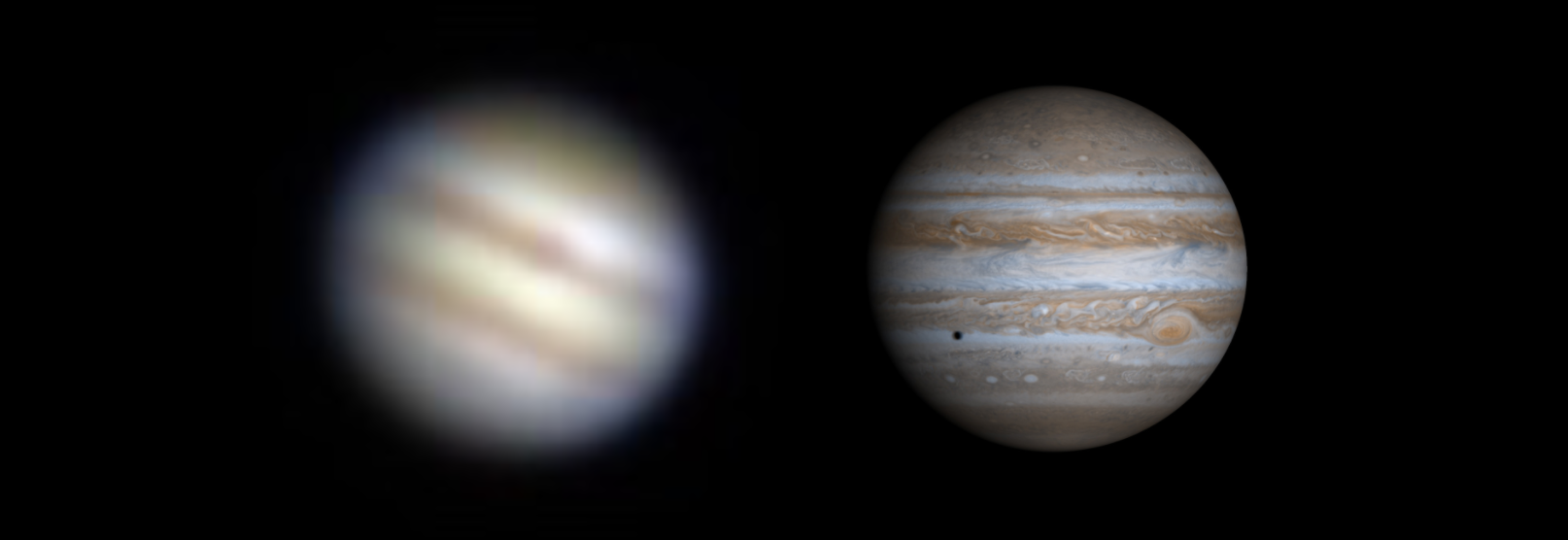 My Jupiter image on the left with a Jupiter image from Casini on the right.
My Jupiter image on the left with a Jupiter image from Casini on the right.
I wanted to bring out Mars’s red-orange surface created by the large amounts of iron oxide (rust) in its soil, but I also wanted to keep the whites of Mars’s permanent ice caps. With Jupiter, I aimed to bring out the saturation of its many bands, which result from the many different chemicals that compose Jupiter and the different velocities of gases and winds in said bands.
Another exciting feature of Jupiter are its four bright moons! Because the moons are much dimmer than Jupiter itself, we have to adjust the brightness of our image to view the moons, eliminating any detail on Jupiter:
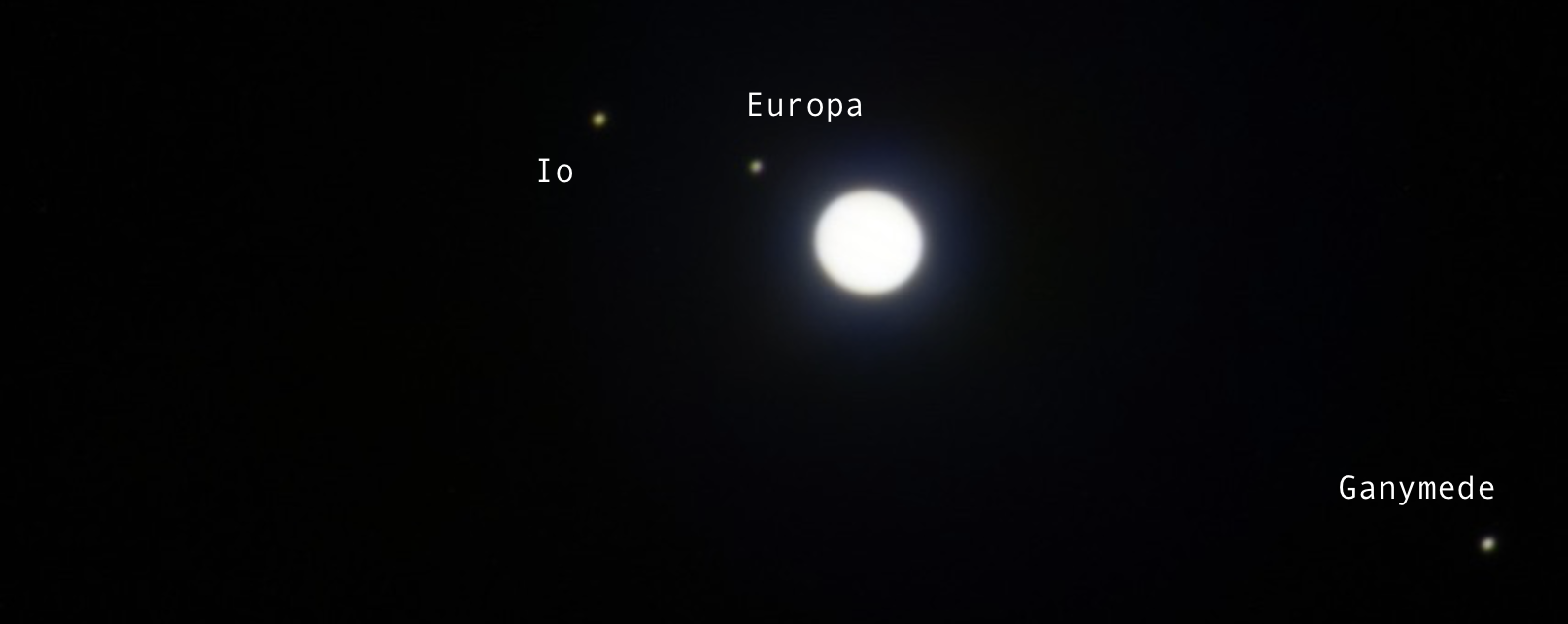 Notice how Io is yellower than the other moons – this is due to the large amounts of sulfur across Io’s surface!
Notice how Io is yellower than the other moons – this is due to the large amounts of sulfur across Io’s surface!
–
Revealing the true color of Neptune and Uranus was a different challenge: by using their surroundings, we were able to capture the “natural” color of the planets and their moons. To observe Neptune, we used 10 exposures of B, V, and R, and to observe Uranus, we used 30 exposures of the same filters. By matching our images’ background stars with catalogued stars, we were able to calibrate our images’ colors with the recorded “natural” colors of the stars, revelaing the color of the planets as a byproduct. While Uranus and Neptune are both blue because of the methane in their atmospheres, Uranus dons a paler, greener shade to Neptune’s deeper blue hue. Scientists attribute this difference to the thick haze that exists on Uranus, which lightens its color. Without the planets’ hazes, Neptune and Uranus would appear nearly equally blue (NASA)!
Again, these images are fairly low-resolution, but check out how they compare to photos taken by professionals:
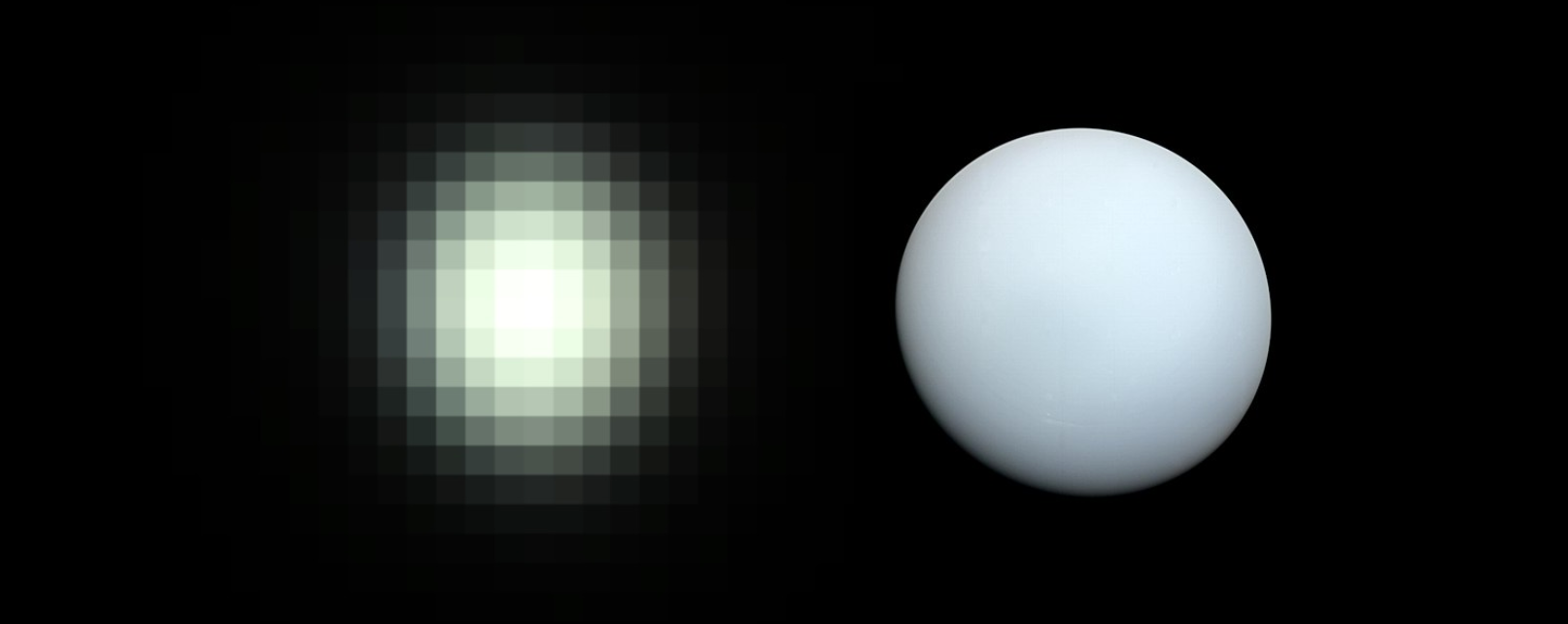 My Uranus image on the left with a Uranus image from Voyager 2 on the right.
My Uranus image on the left with a Uranus image from Voyager 2 on the right.
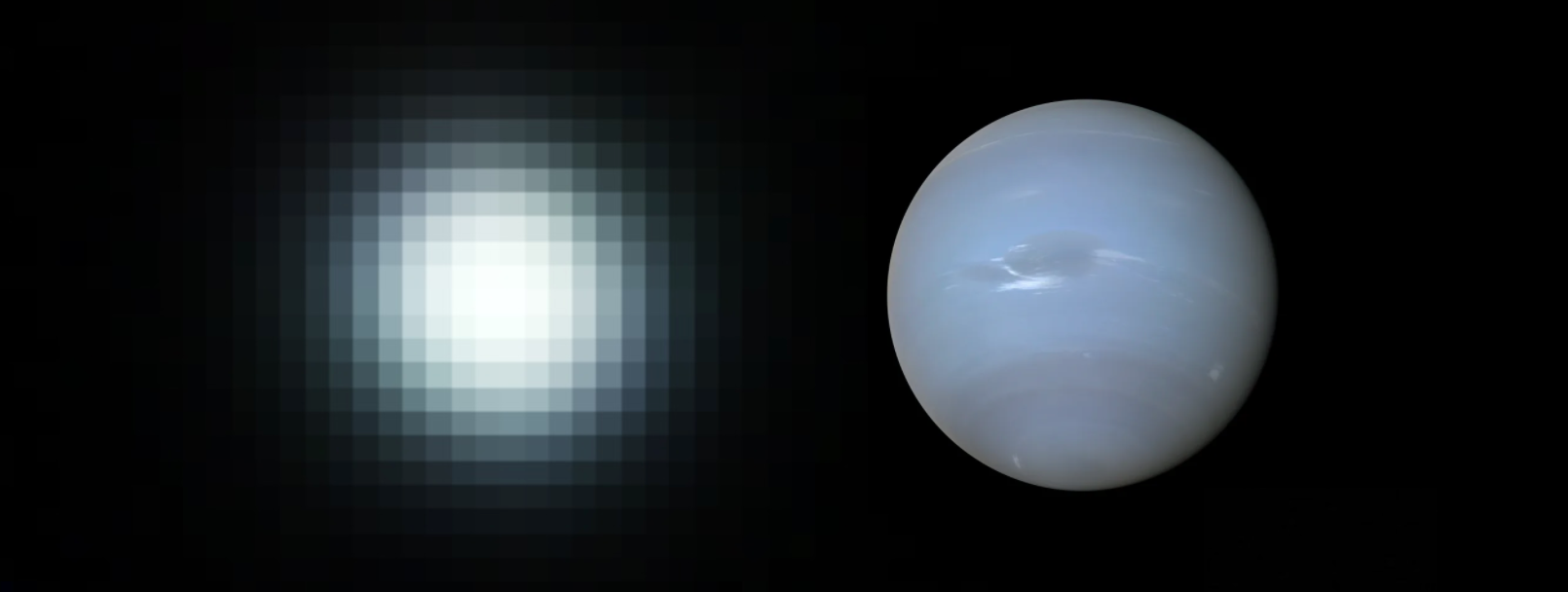 My Neptune image on the left with a Neptune image from Voyager 2 on the right.
My Neptune image on the left with a Neptune image from Voyager 2 on the right.
Similarly to Jupiter, Uranus and Neptune also have moons:
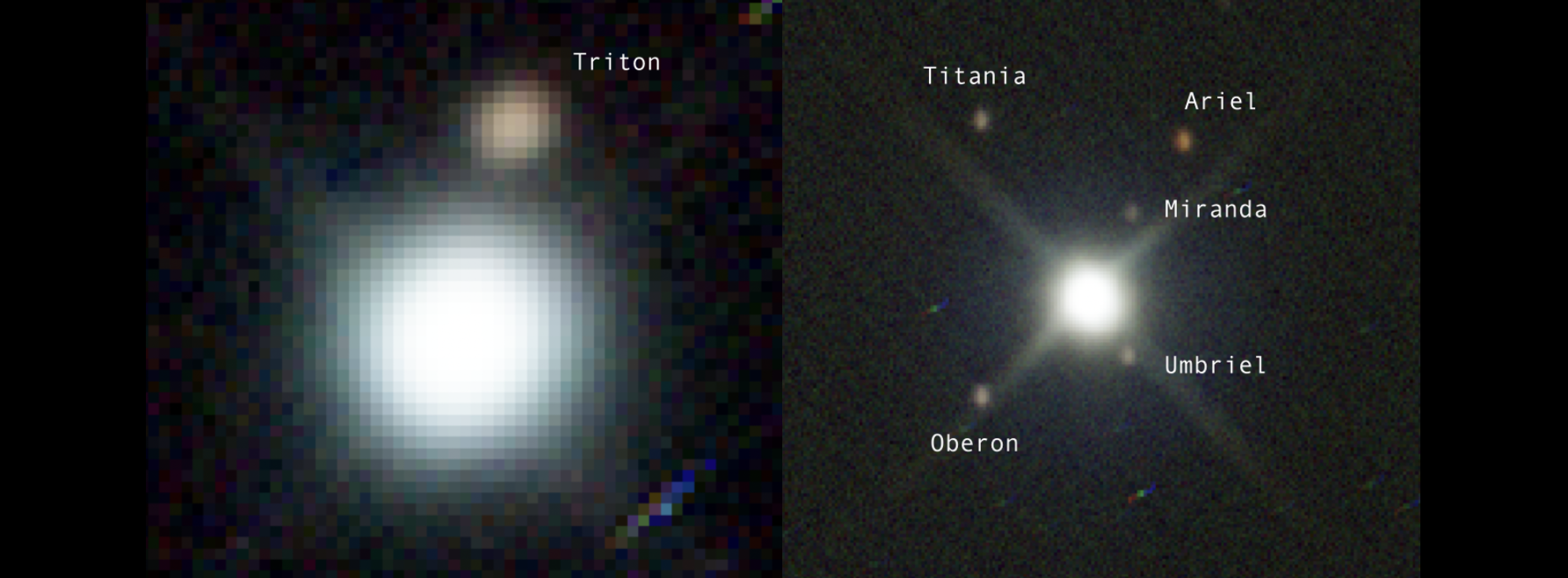 Neptune and Triton on the left, Uranus and Oberon, Ariel, Umbriel, Titania, Miranda on the right.
Neptune and Triton on the left, Uranus and Oberon, Ariel, Umbriel, Titania, Miranda on the right.
– Rising to the challenge of creating colored images of the planets has been an exciting adventure, revealing colorful truths about our planetary neighbors. I look forward to continuing to learn about the causes of color in our universe!